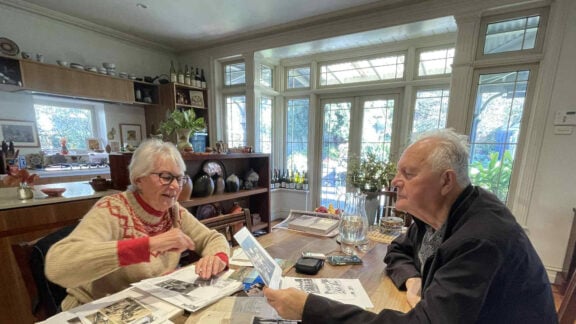The cost of issuing a passport is taking off at $400. The fees for Australian passport issuance will increase twice in 2024, remaining among the world’s most powerful alongside the Greek and Cypriot passports (which, however, cost less).
The new Australian passport, in addition to being listed among the strongest, ranks even higher in the international ranking due to its higher cost, attributed to its modern security features.
The first increase will take effect on January 1, 2024, following the annual adjustment for inflation (+5.4 per cent for this year approximately) as reported in the Australian Financial Review.
Then, another increase will follow on July 1, as issuance fees rise by 15 per cent, adding nearly $50 extra.
For an adult Australian passport with a validity of 10 years, the fees are currently $325, plus $237 on top if you need it quickly and request express processing of your application.
The new increases will raise the fees to approximately $375, and with the photos, the cost of issuance will be close to $400.
As stated by the Australian Passport Office, for citizens over 75 years old, there is an option for a 5-year validity (as is the case for children under 16), with fees almost half of the current amount ($164 today, which will also increase in 2024).
“This one-time increase aims to ensure that we can allocate resources to our passport systems and make them modern and suitable for their purpose… especially at a time when there are continuous threats to people’s safety and identity,” said Finance Minister Jim Chalmers, presenting the interim budget figures (MYEFO) a few days ago, where the news of the increased passport costs was also disclosed.
Mr Chalmers characterised the 15 per cent increase as “relatively moderate”.
A representative of the Department of Foreign Affairs and Trade (DFAT) noted that the fee for a typical adult passport for its entire 10-year validity period will continue to be less than $40 annually.
On the other hand, this increase ensures that Australia can “stay ahead of the game in addressing rapidly evolving and more advanced threats to the security of identification data”.
“The increase in passport fees will support priority initiatives in the portfolio of Foreign Affairs and Trade, including the government’s efforts to modernise Australia’s passport systems and services,” said the spokesperson, adding that the Australian passport is internationally recognised for its high quality.
“It has a high level of technological expertise, supported by strict anti-fraud measures, ensuring its integrity. This is a key reason why Australian passport holders currently have visa-free access to more than 100 countries.”
Kevin Hogan, the opposition spokesperson for Tourism, commenting on the mandates, stated that this entails two increases in passport issuance costs within a year. This amount adds to the already considerably more expensive airfares, along with the $10 increase in the ‘departure tax’ from July 1, 2024.
This is the Passenger Movement Charge (PMC), which will increase from $60 to $70.
The amount may not seem significant compared to the height of ticket prices, but the next time you book a flight to Greece, it’s worth checking how much you’re paying for the fare and how much for taxes.
For those traveling to certain European countries, including Greece, sometime in the near future (2024 according to news reports, 2025 according to the DFAT’s www.smartraveller.com), the European Travel Information and Authorisation System (ETIAS) is also ‘coming.’
Australians will need to apply through ETIAS, an electronic system that will complete security checks for visitors before entering any Schengen Treaty country. In addition, the cost will be around $11.
BREAKING DOWN THE COST
The high cost of Australian passport fees could be attributed to security measures, according to David Bierman of the University of Technology Sydney.
He explained, however, that other countries, such as the United States, the United Kingdom, and Canada, also have modern security features in their passports.
Therefore, security “does not fully explain why our passports are so expensive,” Mr Bierman said.
There are also additional costs for labor and printing, as well as the huge demand for travel after the relaxation of restrictions. In 2022 alone, more than 2.6 million Australian passports were issued.
Mr Bierman mentioned that there is also a “revenue increase element” in the cost of passports.
“I think it has much more to do with the fact that it is quite good revenue,” he said.
The one-off increase in Australian passport fees from July 1 is expected to generate $349 million over a three-year period in the state coffers, which, according to the government, “will go back into the issuance system”.
The “next-generation” passport in the ‘R’ series, which the DFAT claims is the safest version to date, has been gradually released since September 2022.
It replaces the previous ‘P’ series issued since 2014 and features upgraded security elements designed to prevent identity forgery and theft.
The current processing times for Australian passport applications, which increased two years ago when the country’s borders reopened after the pandemic, are six weeks at least, according to the Australian Passport Office website.
THE STRENGHT OF THE NEW PASSPORT
According to the latest Henley Passport Index global ranking, passports from Australia, Greece, and Cyprus remain among the world’s most powerful.
The ‘Passport Index’ has been compiled for 18 years based on the number of destinations where holders can access visa-free or obtain a visa, visit permit, or Electronic Travel Authorisation (ETA) on arrival.
The ranking is based on data from the International Air Transport Association (IATA) and is reinforced by the research team at Henley & Partners, a London-based consultancy firm specialising in migration and investment matters.
More specifically, Australia remains in 6th place, Greece in 7th, and Cyprus in 12th place.
Each gained two destinations, reaching 188, 187, and 181, respectively.
As for the cost of issuance fees for a Greek passport, it is €84.40 (approximately $138), and for a Cypriot passport, it is €70 (approximately $115).
At the top of the Henley Passport Index list, Singapore remained with 193 (cost of a 10-year passport fee $78), followed by Japan with 192 ($168).
Tied for third place with 191 destinations are Finland ($82), France ($140), Germany ($98), Italy ($190), South Korea ($58), Spain ($49), and Sweden ($58).
In the last position in the ranking (105th) was Afghanistan (27 destinations), with Syria (28) and Iraq (30) just above having the least powerful passports globally.”
*With AFR, 7News









